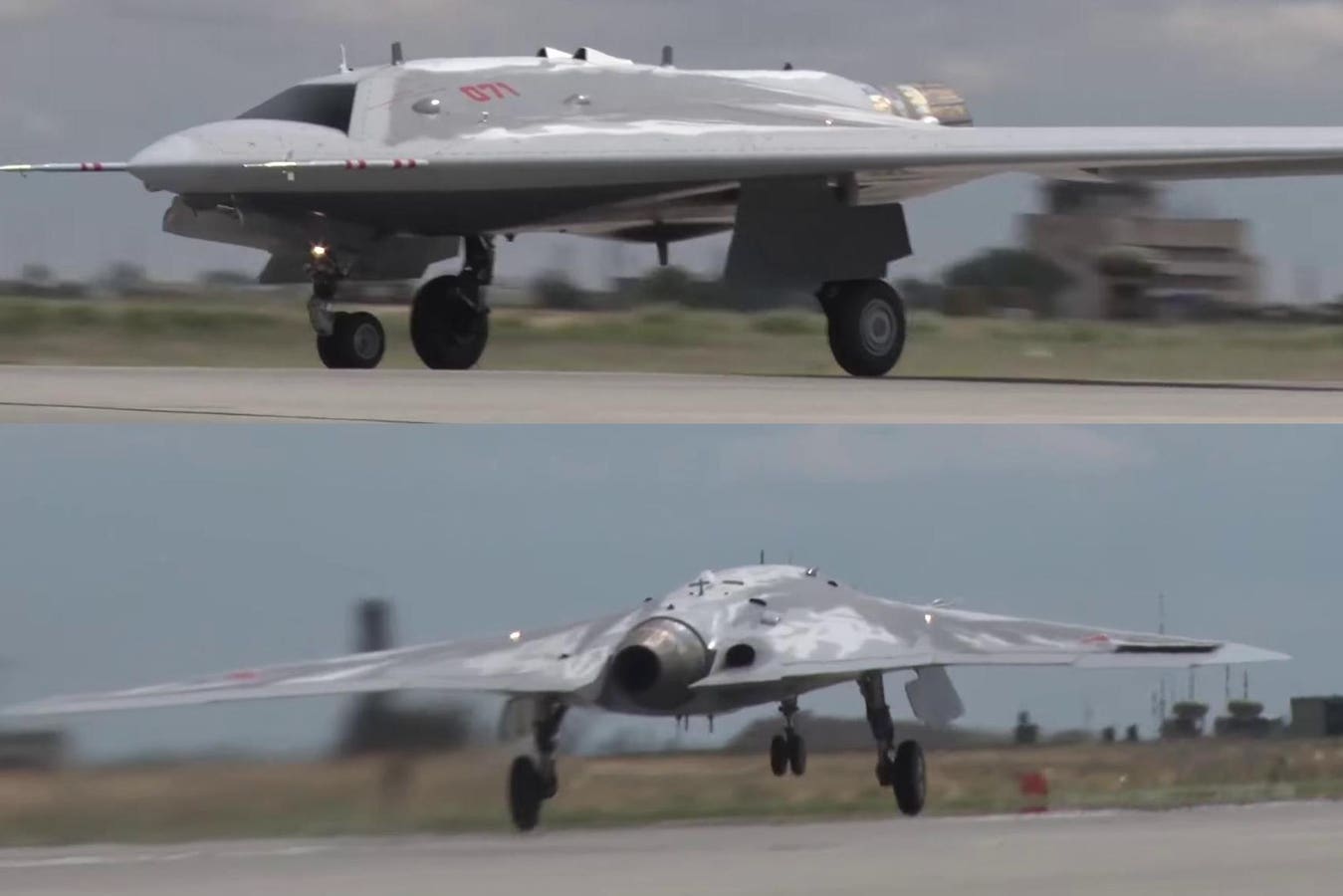Ukrainian troops in eastern Ukraine received a surprise gift on Saturday when a rare Russian air force Okhotnik stealth drone fell out of the sky over the fortress town of Chasiv Yar.
There are just a handful of the 65-foot-wingspan, jet-powered drones in existence. Now one of them—or its wreckage, at least—is in Ukrainian and allied hands. “They will disassemble it down to the last screw and, of course, familiarize themselves with its rich internal contents,” moaned Fighterbomber, the unofficial Telegram channel of the Russian air force.
It’s not clear what happened to bring down the radar-evading drone. Video shot from the ground apparently depicts a warplane firing a missile at the arrow-shaped Okhotnik, sending it tumbling to the ground.
Was the shooter a Ukrainian fighter? Or was it a Russian fighter? The former might seem more likely, but the latter isn’t inconceivable. If the Okhotnik malfunctioned, the Russians may have opted to shoot it down rather than risk it crash-landing mostly intact inside Ukrainian lines.
“I really want to hope that it was a loss of control due to something failing … or the UAV’s brains went crazy for their own reasons, and not the drone being intercepted by the enemy,” Fighterbomber wrote.
One strong possibility is that the Okhotnik ran afoul of the heavy radio jamming along that sector of the 700-mile front line. The drone likely lacks full autonomy, and instead depends on a steady connection to operators on the ground. That’s a design detail Ukrainian and allied analysts can now confirm as they inspect the Okhotnik’s remains.
It’s an embarrassing loss for the battered Russian air force, which has written off more than 100 warplanes—including at least one Sukhoi Su-57 stealth fighter—to Ukrainian guns, missiles and drones.
The first blurry images of the Okhotnik drone appeared in January 2019 on a Russian aviation website. The photos depicted a tractor towing the apparently 11-ton unmanned aerial vehicle along a snow-ringed runway at an airfield in Novosibirsk in southern Russia.
A flying wing similar in shape to the U.S. Air Force’s Northrop Grumman B-2 stealth bomber, Okhotnik—that means “hunter” in Russian—could, in theory, penetrate enemy defenses to deliver ordnance. Okhotnik is in the same class as China’s Tian Ying drone and the USAF’s Lockheed Martin RQ-170 surveillance UAV.
The likelihood of Okhotnik eventually entering squadron service with the Russian air force is “big,” said Tom Cooper, an independent expert on Russian military aviation. But five years after its blurry debut, it’s not clear that Sukhoi has built enough Okhotniks—or conducted enough testing—to fully equip a front-line unit.
It might still be a developmental aircraft. While it’s not uncommon for the Russian air force to deploy test planes to combat zones in order to collect data in a real-world context, it’s a huge setback to a development effort to lose a rare and expensive test plane during combat trials.
There are some obvious reasons why the Russian air force might feel compelled to deploy an Okhotnik, especially as a surveillance asset. The Russians are losing their standard surveillance drones at an accelerating and unsustainable rate.
According to analyst Andrew Perpetua, Russian forces fly around 300 drone surveillance sorties every day of their 31-month wider war on Ukraine. Lately, nearly a third of those sorties have ended with the drone getting shot down by Ukrainian forces. “In the past, Russia was net gaining drones per month and now I think they are net losing,” Perpetua noted last month.
Perhaps anticipating a surveillance gap, the Russians took a big risk with their newest—and still not fully ready—Okhotnik drone. But the Okhotnik may have fallen victim to the same Ukrainian defenses that have made the sky over the front line so dangerous for less sophisticated drone types.
This story has been updated to narrow down the possible explanations for the Okhotnik’s loss.
Read the full article here





